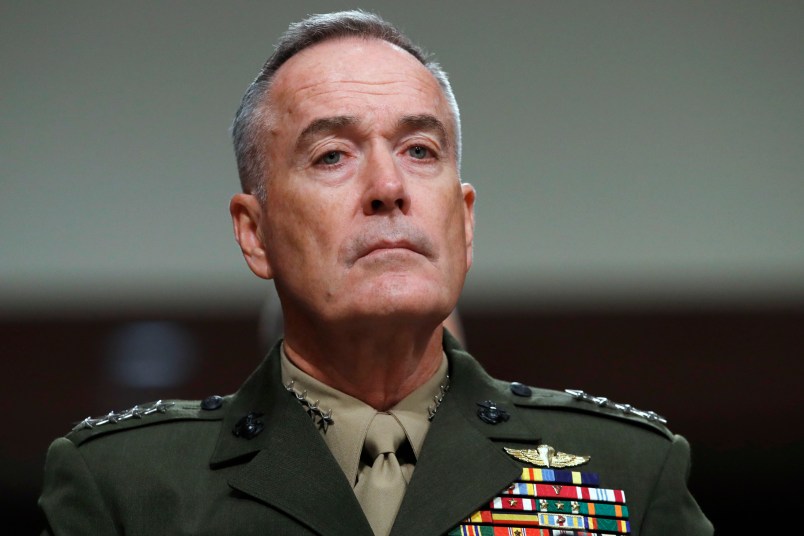This morning there is news that there will – for now – be no change in the US military’s policy toward transgender service members. The news comes in the form of a letter shared with members of the press from Chairman of the Joint Chiefs of Staff Gen. Joseph Dunford.
You can see the letter here.
NEW: Chairman of Joint Chiefs tells U-S military “no modifications” to current transgender policy until implementation guidance given. pic.twitter.com/BRO9QnoG2p
— Peter Alexander (@PeterAlexander) July 27, 2017
By and large, the letter speaks for itself. Dunford’s reference to continuing “to treat all of our personnel with respect” seems like a fairly clear indication of his personal view of the matter. But it’s the second sentence of the first paragraph which caught my attention. Dunford writes: “There will be no modifications to the current policy until the President’s direction has been received by the Secretary of Defense and the Secretary has issued implementation guidance.”
On its face this is no more than a statement of military command protocol and the chain of command. The President is Commander-in-Chief of the Armed Forces, with vast powers that position grants him. But the President does not and cannot just dial up the head of Central Command and order a war. There is a specific and statutory chain of command. Under the 1986 Goldwater-Nichols Act, the key players in the process are the President, the Secretary of Defense, the Chairman of the Joint Chiefs of Staff and the heads of the Unified Commands – Central Command, European Command, Pacific Command, et al. The key element of Goldwater-Nichols was diminishing the power of the service chiefs in favor of the Chairman of the Joint Chiefs and Combatant Commanders. But the Secretary of Defense remains the key link in the conveyance of commands from the President to the uniformed military.
What Dunford is saying here is that the Pentagon doesn’t change departmental policy based on ambiguous tweets. Not that it’s really the issue here. But if you wanted to get technical about it, how does the chain of command even really know that the those tweets came from Donald Trump? Does the most powerful military in the world, with the capacity to destroy most or all of life on Earth really rely on Twitter’s verification protocols? More seriously and concretely, I take this letter to signify – I think to send a message, though I could certainly be over-interpreting it – that the President’s bizarre and highly personalized way of conducting the presidency and in key respects transforming it will not operate at the Pentagon.
There’s process and there’s law and there’s the President. The person of the president does not trump the other two. Again, maybe I’m reading too much into this. And I don’t mean any of this to suggest that there is some new military ‘resistance’ to the President. I take this simply to be an intentionally public statement of facts and legal process. And I think it is quite significant.






